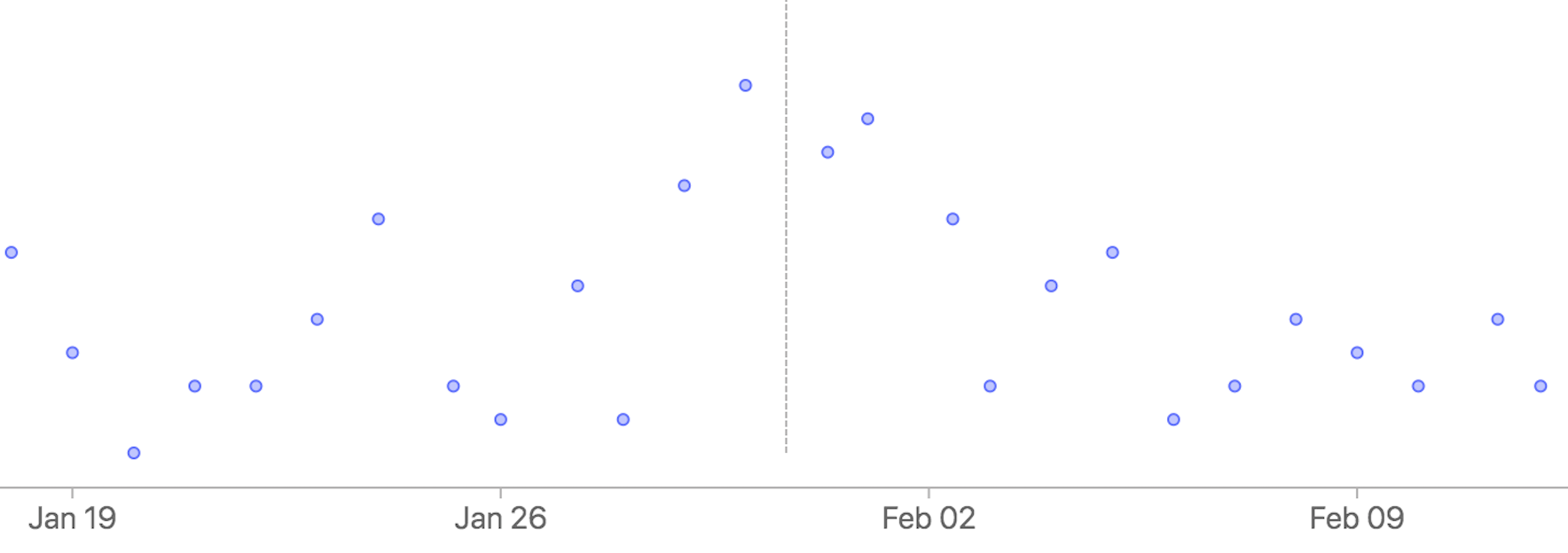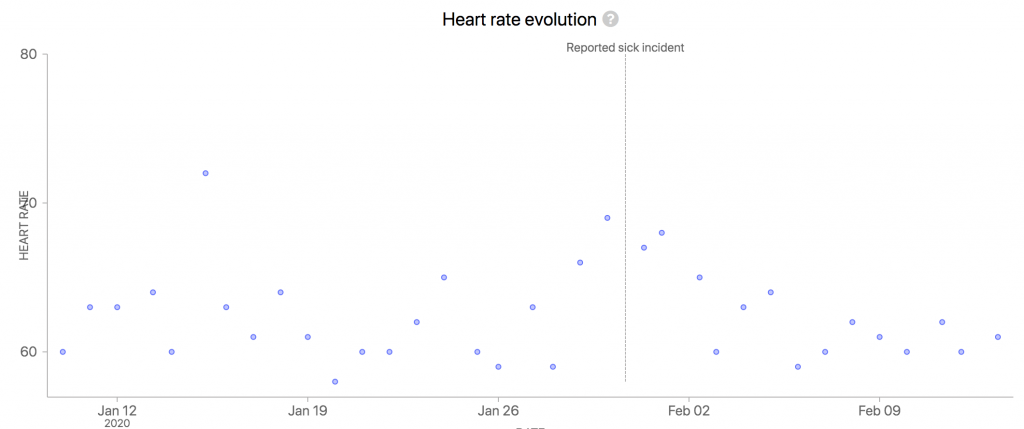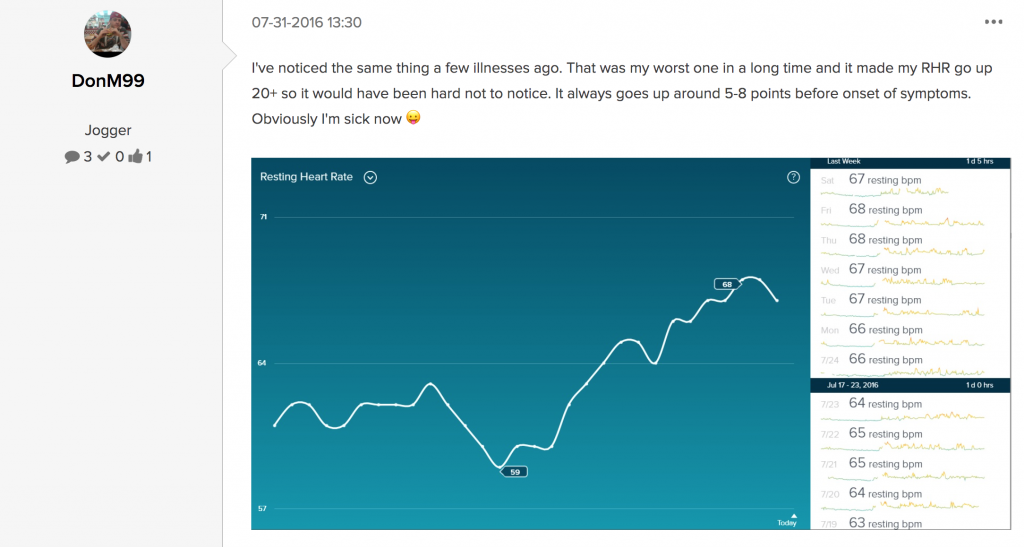Self-Tracking For COVID-19

Gary Wolf
May 27, 2020
Is it possible to get an advance warning of sickness onset using simple analysis of your self-tracking data? You can find out for yourself by joining Quantified Flu.
This project of the Open Humans Foundation creates an accessible and privately controlled personal data store that connects daily symptom report with wearables data on a timeline for your own analysis. You can optionally share with researchers. The most interesting and useful thing about this project, from a Quantified Self perspective, is that the data is collected and stored in a way that makes it maximally controllable by participants. We are free to keep it completely private, while at the same time it is accessible in a format that allows us to use community created visualization templates.

Many people who watch their wearables data have published individual reports of using their data to predict sickness onset before other symptoms are felt. I saw my first talk about this technique at the very first Quantified Self conference in 2011. A 2015 account from a Fitbit user reports elevation of resting heart rate 2 days before sickness onset, saying “it starts to go up 2 days before I get any symptoms.” This set in motion a thread that has continued for 5 years, with additional users posting similar observations, many of them including snapshots of their data. But the reports were not unanimous. Many users saw spike in resting heart rate in advance of symptoms, but some did not report on timing and for one the elevated RHR was simultaneous with sickness.

In 2017, Xiao Li and her colleagues at the Snyder Lab at Stanford University published a paper showing that tracking heart rate among other physiological signals in daily life can give warning of sickness onset. It’s a great paper, based on a careful examination of data from over 250,000 daily measurements among 43 people, but it uses methods far beyond the abilities of most civilians.
So, while the technique of self-tracking simple biometrics to warn of incipient sickness is widespread in the QS community, the process of developing the technique and understanding its limits is unfinished.
I’ll be posting more about using self-tracking data to predict COVID-19 infection in coming weeks, but for now, I want to prompt some more signups for Quantified Flu. It’s been in a exploratory phase, but with over 100 participants so far it is already proving useful and robust enough to justify spreading the word. Sign up, and tell your friends. There are a number of academic research projects exploring this question, but none, that I know of, provide full data access and control to participants, along with dedicated technical resources to supporting visualization and analysis focused on individual learning. This is a good one. Let’s support it.
SIGN UP LINK FOR QUANTIFIED FLU
(Quantified Flu and Open Humans are nonprofit, community governed projects. I’m on the board of Open Humans and glad to answer questions about how it is run. You’re also invited to join our weekly community calls; these calls are open.)


